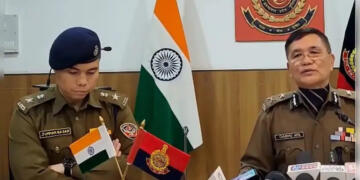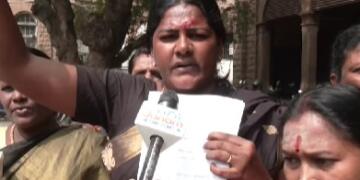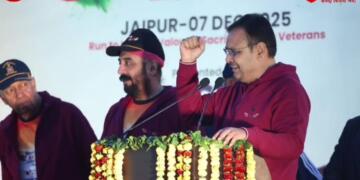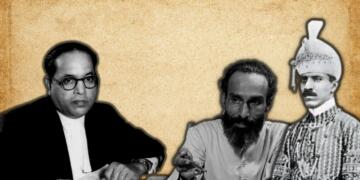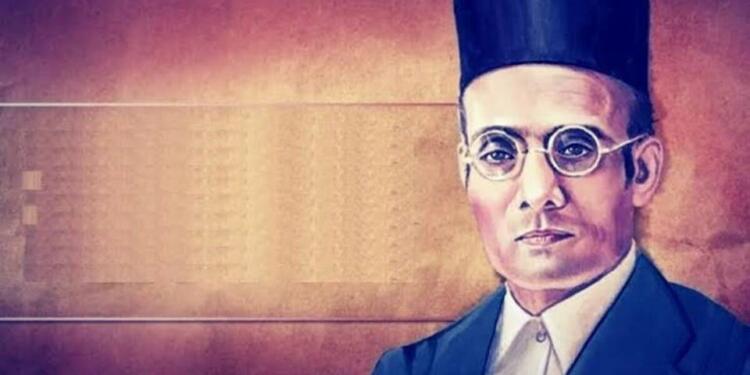Today, May 28, marks the birth anniversary of Vinayak Damodar Savarkar, popularly known as Veer Savarkar, a towering figure in India’s freedom struggle and the principal ideologue of Hindutva. On this day, while admirers celebrate his enduring legacy of nationalism, courage, and intellectual brilliance, it is equally important to remember the deliberate and brutal vilification campaign launched against him by the Indian National Congress—one that resulted in a mob lynching of his younger brother, Dr. Narayan Damodar Savarkar, soon after Mahatma Gandhi’s assassination in 1948.
For over seven decades, the Congress ecosystem has relentlessly portrayed Savarkar as a divisive figure, attacking his Hindutva ideology, mercy petitions during his imprisonment in the Andaman Cellular Jail, and falsely implicating him in Gandhi’s assassination despite his acquittal by the court due to lack of evidence.
But perhaps one of the most underreported and heinous chapters in this smear campaign occurred on the streets of Mumbai in 1948, when Congress members incited a mob attack on the Savarkar Sadan in Dadar, leading to the lynching of Dr Narayan Damodar Savarkar, a medical doctor and the younger brother of Veer Savarkar.
The Aftermath of Gandhi’s Assassination: Brahmin Massacre Begins
On January 30, 1948, Mohandas Karamchand Gandhi was assassinated in Delhi by Nathuram Godse, a former RSS member and editor of the nationalist newspaper Agrani. Godse hailed from the Chitpavan Brahmin community of Maharashtra—a community to which Veer Savarkar also belonged. As soon as these details became public, Congress party workers and Gandhians launched violent attacks against Brahmins, starting with Pune and spreading across Maharashtra.
The initial rage was directed at individuals with the surname ‘Godse’, but it soon expanded into mass, indiscriminate caste-based violence targeting the Deshastha, Karhade, and Chitpavan Brahmins. Hundreds were lynched, homes were burned, and temples were desecrated. The violence extended even to people entirely unconnected to the assassination but linked by surname or caste identity.
Attack on Savarkar Sadan in Dadar
According to historian Vikram Sampath in his authoritative two-volume biography “Savarkar: A Contested Legacy”, on pages 420–421, a mob of nearly 1,000 Congress supporters gathered outside the Savarkar Sadan in Dadar, shouting slogans and pelting stones. Savarkar’s books, photos, and furniture were thrown onto the streets and set on fire. The mob’s fury was so intense that they broke into the house, and it was only the presence of mind of Bal Savarkar and Bhaskar Shinde that saved Veer Savarkar, his wife Yamuna, and son Vishwas.
Savarkar’s personal secretary and bodyguard had already been detained by the Mumbai police the previous night, leaving the house vulnerable. What makes this more troubling is that the police were present but largely inactive, failing to intervene until after the attack escalated.
The Lynching of Dr Narayan Savarkar
While Veer Savarkar barely escaped the mob’s wrath, his younger brother, Dr Narayan Damodar Savarkar, was not so fortunate. According to British researcher Maureen Patterson, whose paper “The Shifting Fortunes of Chitpavan Brahmins: The Focus on 1948” is cited in Sampath’s work, Congress supporters managed to bypass the police and attack Dr Narayan, who lived next door.
Dr Narayan was dragged out of his house, beaten with bricks and stones, and left in a pool of blood. He suffered a severe head injury and never fully recovered. Despite being rushed to a hospital, he died 20 months later on October 19, 1949—making him one of independent India’s first victims of a politically motivated lynching.
Suppression of Truth: Media and State Silence
The Congress-led administration and media of the time chose to downplay or ignore the targeted violence against Brahmins. Police reports, press coverage, and official narratives deliberately omitted any mention of the massacre of Brahmins or the attack on Savarkar’s family. It is only through digitized papers of Sardar Patel in the National Archives of India and independent documentation like Patterson’s work that the true extent of the violence is slowly being uncovered today.
A Deliberate Political Campaign
The Congress party’s campaign against Savarkar was not based on facts or legal findings, but ideological hostility. Despite being acquitted of all charges related to Gandhi’s assassination, Congress leaders and their liberal sympathizers have continued to insinuate his involvement. Their objective has long been to tarnish Savarkar’s image—simply because he represented a strong Hindu nationalist alternative to the Congress narrative of appeasement and “composite nationalism”.
Even Rahul Gandhi, in recent years, has invoked Savarkar’s mercy petitions in a derogatory manner, ignoring the inhuman conditions of Cellular Jail and the fact that Savarkar made such petitions on behalf of all Indian prisoners, not just himself.
As India commemorates the birth anniversary of Veer Savarkar—a freedom fighter, poet, philosopher, and revolutionary—it is important to acknowledge not just his contributions, but also the horrific political vendetta waged against him and his family. The lynching of Dr Narayan Savarkar by Congress workers was not just an act of violence but a political message—that dissent against the Nehruvian-Gandhian order would be crushed, even by bloodshed. Today, as we re-evaluate Savarkar’s place in Indian history, we must also remember and document the truth that was hidden for decades—of violence, vengeance, and suppression carried out in the name of “non-violence.”


